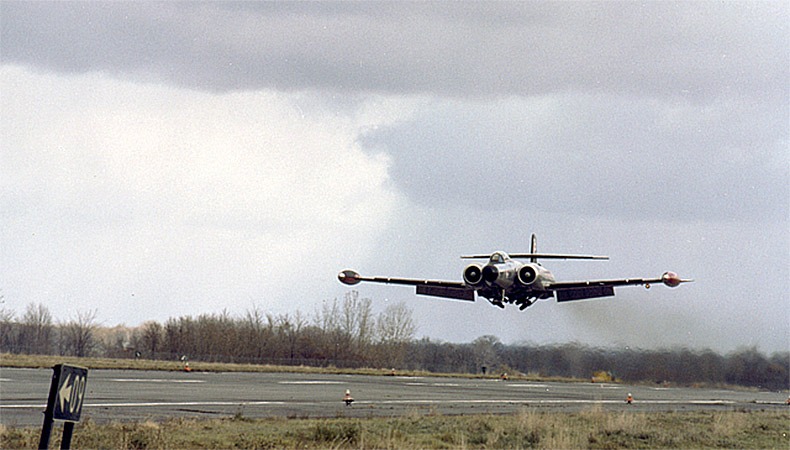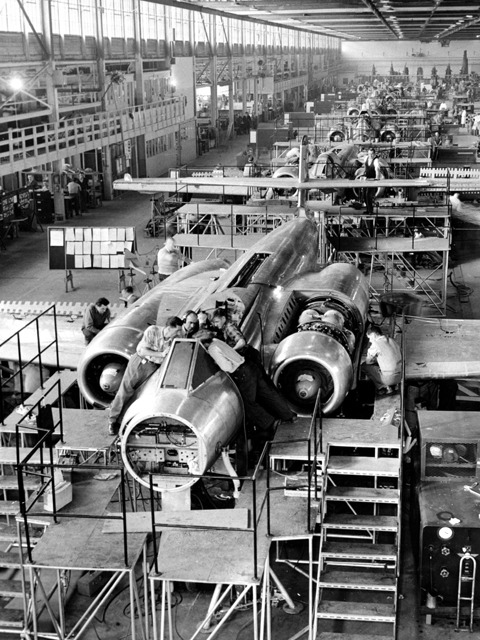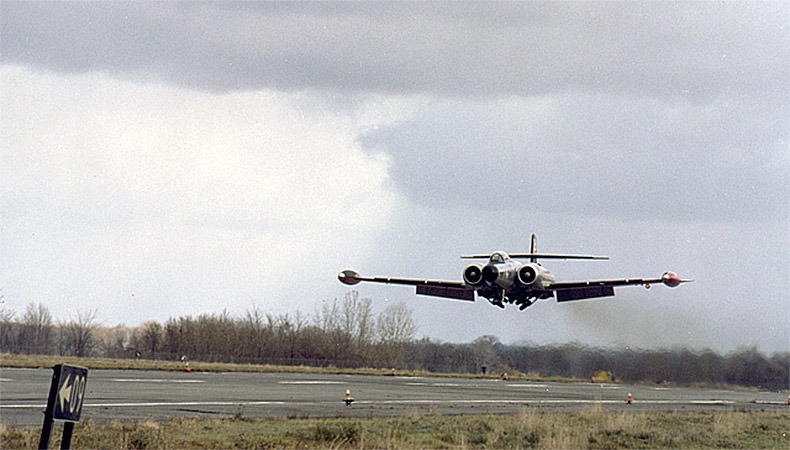Avro Canada CF-100 Mk.5D (100757)
Highlights
- A Canadian two-seater, all-weather jet fighter and interceptor designed and built by Avro Canada Limited from 1950 to 1958
- Only Canadian-designed fighter to enter mass production: 692 built
- Used by the RCAF and the Canadian Forces in Canada and on NORAD and NATO missions
- Production versions powered by Orenda engines developed by Avro Canada Limited/Orenda Engines Limited
- Flown by test pilot Janusz Zurakowski in December 1952 when he broke the sound barrier in a dive
- Known as “the Clunk” after the noise made in its retracting landing gear and “the Lead Sled” due to its heavy controls
- Avro Canada CF-105 Arrow was its intended replacement; when the Arrow was cancelled, the McDonnell CF-101 Voodoo replaced it
- First flight was on January 19th, 1950

Artifact no.: 1979.0917
Manufacturer: A.V. Roe Canada Ltd.
Manufacturer location: Canada
Manufacture date: 1958
Acquisition date: 1979
Registration number: 100757 (CAF)
History
The CF-100 and its Orenda jet engines were designed and built in Canada. As an all-weather interceptor with a long range and powerful radar, it was ideal for northern air defence, and was probably the best all-weather fighter of its time. CF-100s also served in Europe with Canadian and Belgian units. On retirement as fighters, some CF-100s were fitted as target tugs and others were fitted with electronic countermeasures equipment. The last CF-100 retired in September 1981. A total of 692 were built.
Although officially designated the “Canuck”, the name never caught on. The CF-100 was known universally in the RCAF as the “Clunk” or “Lead Sled”. The CF-100 had good stretch which allowed for potential of equipment and armament upgrades. The Mk.5 had wing tip extensions added to increase its high-altitude capability.
Current location
The Cold War Exhibition, Canada Aviation and Space Museum
Provenance
Transfer from the Canadian Armed Forces
This CF-100 was manufactured by Avro Aircraft Limited in Malton, Ontario in 1958. It was received by the RCAF in August 1958 and served initially with No. 414 Squadron in North Bay, Ontario. In December 1959 the aircraft was moved to Bagotville, Quebec. For the next twenty years, it served at various locations in Ontario and Quebec.
Around 1972 the CF-100 was converted to an electronic warfare aircraft to train fighter pilots and radar operators. It was flown by an electronic warfare unit at North Bay, Ontario until the end of its service.
The aircraft was flown to Rockcliffe in October 1979 and then transferred to the Museum.
Technical information
- Wing span
- 17.4 m (57 ft 2 3/5 in)
- Length
- 16.5 m (54 ft 1 3/4 in)
- Height
- 4.4 m (14 ft 6 2/5 in)
- Weight, empty
- 10,478 kg (23,100 lb)
- Weight, gross
- 15,208 kg (33,528 lb)
- Cruising speed
- 760 km/h (472 mph)
- Max speed
- 890 km/h (554 mph)
- Rate of climb
- 2,670 m (8,750 ft) /min
- Service ceiling
- 13,720 m (45,000 ft)
- Range
- 3,220 km (2,000 mi)
- Crew
- two
- Power plant
- two Avro Canada Orenda 11, 3,311 kg (7,300 lb), static thrust axial flow turbojet engines



